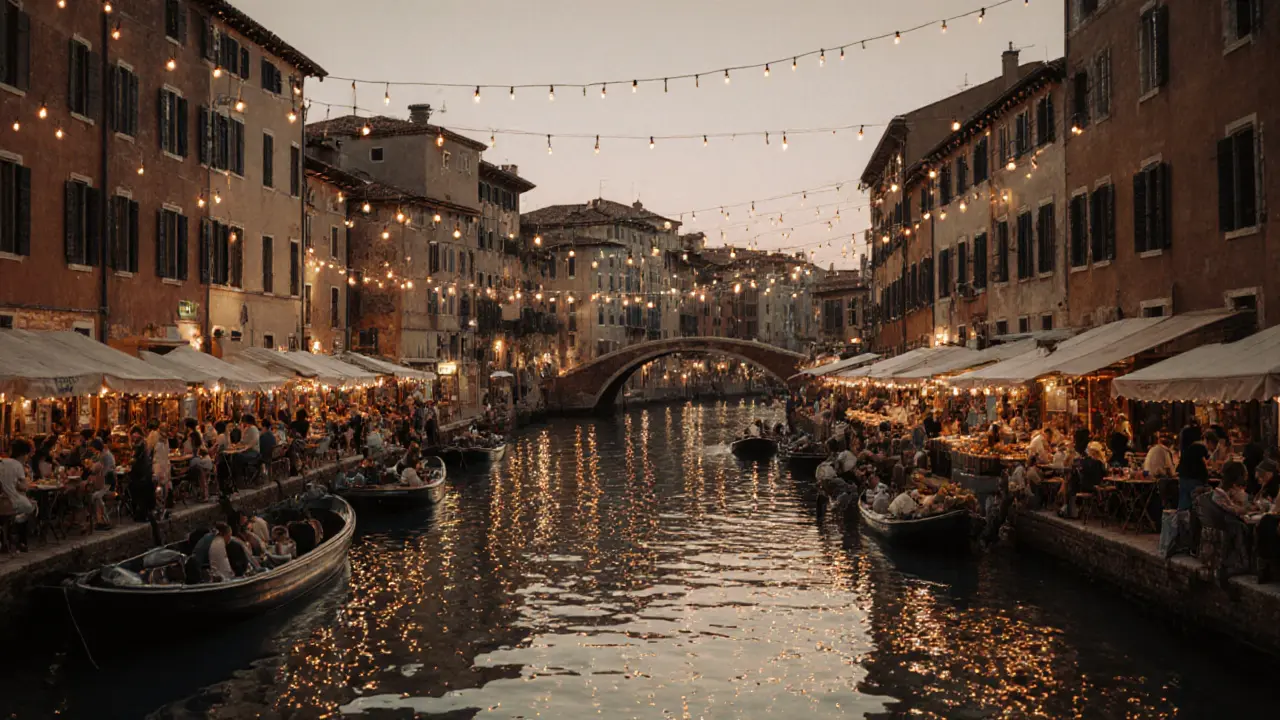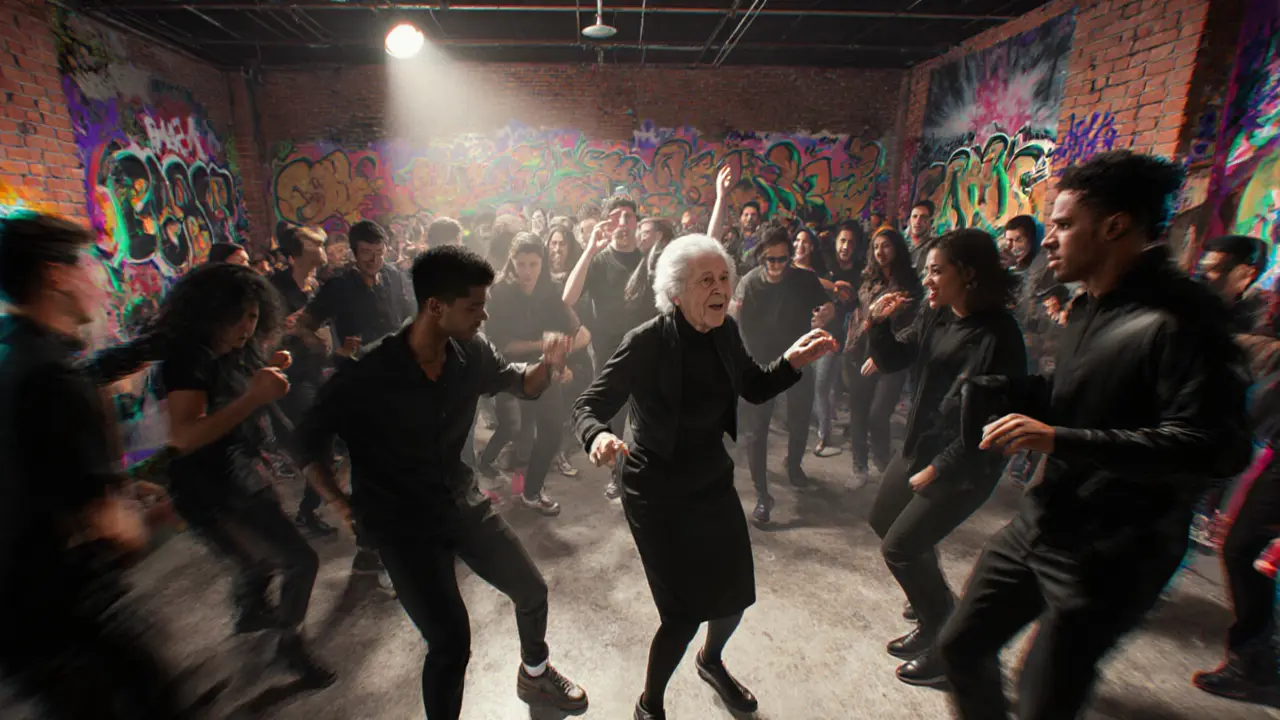
Milan doesn’t sleep when the sun goes down. While it’s known for fashion and design, the city’s nightlife is just as sharp-polished, energetic, and full of surprises. You won’t find just one scene here. You’ll find a dozen, each with its own rhythm, crowd, and vibe. Whether you’re into quiet cocktails with jazz, dancing until 4 a.m., or sipping prosecco by the canal, Milan delivers. And no, you don’t need to be rich or famous to get in. Just know where to go.
The Navigli District: Canals, Cocktails, and Casual Vibes
Start your night in Navigli. This is where Milan’s locals unwind. The canals glow under string lights, and outdoor terraces spill onto the water. It’s not a club scene-it’s a long, slow evening. Bars like Bar Basso (yes, the birthplace of the Negroni Sbagliato) still serve their legendary drinks with zero pretense. Nearby, La Bitta offers natural wines by the glass, and Il Gatto Nero has live acoustic sets on weekends. The crowd? Artists, designers, students, and expats who’ve lived here long enough to know the difference between a gimmick and a genuine good time.Don’t miss the Friday night market along Darsena. Street food stalls serve arancini, truffle panini, and gelato. Grab a bottle of Lambrusco from a vendor, find a bench, and watch the boats drift by. This isn’t nightlife as a spectacle. It’s nightlife as a lifestyle.
Brera: Where Elegance Meets Evening
Brera is Milan’s answer to Paris’s Saint-Germain. Narrow streets, Renaissance buildings, and a quiet luxury that doesn’t shout. The bars here are intimate. Bar Basso is here too, but so is Al Mio Tempo, a hidden speakeasy behind an unmarked door. You need a reservation, and they’ll text you the code. Inside, it’s dim, leather booths, and cocktails made with house-infused spirits. The bartender remembers your name after one visit.For something lighter, try La Bicocca, a wine bar with over 120 bottles by the glass. They pour rare Italian vintages you won’t find elsewhere. The crowd is older here-mid-30s to 50s. No neon, no EDM, no lines. Just good conversation and a glass of Barolo that costs less than a cocktail in New York.
Porta Romana and the Underground Club Scene
If you want to dance, head to Porta Romana. This is where the real party starts after midnight. La Scala isn’t the opera house-it’s a warehouse-turned-club with industrial lights, a massive sound system, and DJs who spin techno, house, and deep bass. The line forms at 1 a.m., but you get in faster if you’re dressed in all black. No sunglasses. No sneakers. This isn’t a fashion show-it’s a vibe check.Another favorite: Capo D’Africa. It’s not in a club building. It’s in a converted garage. The dance floor is concrete. The walls are covered in graffiti. The music? Afrobeat mixed with Italian disco. You’ll see students, DJs from Berlin, and a 65-year-old Milanese grandmother who comes every Friday. It’s chaotic. It’s perfect.

Corso Como: Style, Status, and Sunset Drinks
If you’re here for the glamour, Corso Como is your spot. This is where Milan’s elite unwind after dinner. The place to be? Corso Como 10. It’s a mix of art gallery, restaurant, and rooftop bar. The terrace overlooks a quiet courtyard. At sunset, the lights come on, and the crowd turns into a mix of models, architects, and venture capitalists. The cocktails are expensive-€18 for a gin and tonic-but the view? Worth it.Downstairs, the bar serves Italian aperitivo with small plates: cured meats, olives, and fried zucchini flowers. It’s not a club. It’s a social ritual. People come here to be seen, yes-but also to talk, laugh, and linger. No one rushes. No one leaves before midnight.
What to Avoid
Not all of Milan’s nightlife is worth your time. Stay away from the tourist traps near the Duomo. Places like La Perla or Bar Centrale charge €25 for a drink that tastes like sugar water. They play Top 40 on loop. The staff doesn’t care if you’re there for the first or fifth time. You’ll pay more, get less, and leave bored.Also skip the clubs that advertise “VIP tables” on Instagram. Most are just overpriced rooms with a bouncer who won’t let you in unless you bring a group of six. The real spots don’t need ads. They’re full because locals keep coming back.

When to Go
Milan’s nightlife follows a rhythm. Friday and Saturday are packed. Wednesday and Thursday are quieter, but better for real locals. If you want to feel like you’ve found the secret, go midweek. Bars are less crowded. Bartenders have time to chat. You might even get invited to a private after-party.Most clubs don’t get busy until 1 a.m. Dinner ends late here-10 p.m. is early. So don’t rush. Have a long meal. Walk. Drink aperitivo. Then head out. The night doesn’t start until the city exhales.
Getting Around
Public transport runs until 1:30 a.m. on weekdays, 2:30 a.m. on weekends. After that, use Bolt or Uber. Taxis are expensive and hard to find. If you’re staying near Navigli or Brera, walking is fine. Most places are within 15 minutes of each other. Just wear comfortable shoes. You’ll be on your feet for hours.Final Tip: Dress Like You Belong
Milan doesn’t care if you’re from New York or Tokyo. But it notices if you show up in sweatpants or flip-flops. Even in the underground clubs, people dress with care. Dark jeans, a clean shirt, boots or loafers. No logos. No hats indoors. You don’t need designer labels. You just need to look like you took five minutes to put yourself together. That’s the Milanese standard.There’s no one best night out in Milan. There are five. Pick one that matches your mood. Then go slow. Sip. Listen. Let the city pull you in. You’ll leave not just tired-but changed.
What time do clubs in Milan usually open?
Most clubs in Milan don’t really get going until 1 a.m. or later. Bars and aperitivo spots open around 7 p.m., but the dance floors fill up after midnight. If you show up at 10 p.m., you’ll be one of the first people there-and you’ll miss the real energy. The night starts late, and it lasts late.
Is Milan nightlife expensive?
It depends. Aperitivo in Navigli costs €10-15 and includes snacks. A cocktail in Brera runs €15-20. In clubs like La Scala or Capo D’Africa, drinks are €12-18. You won’t pay €30 for a gin and tonic like you would in London or New York. The real cost is time-not money. The best spots don’t charge cover fees, and you don’t need a VIP table to get in.
Are there any age restrictions for nightlife in Milan?
The legal drinking age in Italy is 18, and most clubs enforce it. ID checks are common, especially in Porta Romana and Corso Como. Some bars in Brera or Navigli are more relaxed, but if you look under 25, they’ll ask. Bring your passport or EU ID card. No exceptions.
What’s the difference between aperitivo and a cocktail?
Aperitivo is a pre-dinner ritual. It’s usually served between 6 p.m. and 9 p.m. and includes a drink-like a Spritz, Negroni, or Prosecco-along with a buffet of small bites: olives, cheese, crostini, and sometimes even hot food. It’s not just a drink. It’s a social event. A cocktail is just the drink. Aperitivo is the whole experience.
Can you go out in Milan without speaking Italian?
Yes, absolutely. In tourist-friendly areas like Navigli, Corso Como, and Brera, most bartenders and staff speak English. But learning a few phrases helps-"Un Aperol Spritz, per favore," or "Grazie" goes a long way. Locals appreciate the effort. And in the underground spots, like Capo D’Africa, a smile and a nod are enough.
Post A Comment